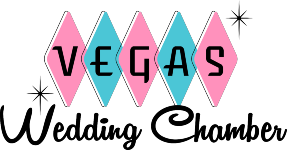
| Dear clients and friends,
|
| PPP Application Documents for Lenders
The American Institute of CPAs, the AICPA-led Coalition, and other key stakeholders - collectively representing 44K CPA firms, 2.5M small businesses and 30M employees - have come together to drive a common understanding and approach around the implementation of the U.S. Treasury and Small Business Administration Paycheck Protection Program (PPP). Based on these collective discussions and our understanding of the intent of the PPP program, the AICPA is making the following broad recommendations for lender documents as well as providing direction on a few key calculations. These AICPA recommendations are not meant to be comprehensive. This is not intended to be used as a loan calculator. Rather, these recommendations are meant to help minimize confusion and complexity for applicants and to help drive consistency with lenders. Our overall objective is to help drive an effective PPP application process that quickly directs relief funds into the hands of small business owners and their employees. I. For Employers: 1. Federal payroll tax reports:
2019 IRS quarterly reports on Form 941 and annual Forms 940 or 944. If your organization uses a Professional Employer Organization (PEO) you can supply other supporting documents. 4. Retirement plan benefits:
Documentation showing the sum of all retirement plan funding costs paid by the organization. Additional Points For Gathering Employer Documents
Independent contractors not included in employer payroll calculation: Some lenders originally requested that data include 1099s for independent contractors. However, 13 CFR Part 120, Issued by the SBA on April 2nd states in item 2h (page 11) for a loan application that independent contractors should NOT be included in the payroll calculation for employers as any independent contractor should be submitting their own loan application. II. For Sole Proprietors, Independent Contractors and Self-Employed Individuals: 1.
All 1099s received by the independent contractor in 2019 or the 2019 individual tax return proving schedule C income. Note: Additional Treasury/SBA guidance may be provided soon. III. Other Application Clarifications 1.
Use the gross payroll approach for both loan applications and forgiveness, also employer FICA should not be included. Thank you, take care and be safe, McCarthy Kaster Guerrero CPAs |
| The above is taken from the McCarthy Kaster CPAs & Business Advisors newsletter which has been a great source of COVID19 financial information. I recommend anyone looking to keep up to date with the constantly changing financial tools associated with the current pandemic to visit their site and join their newsletter. - Jason Whaley, Vice President |
The post Paycheck Protection Program Q&A appeared first on Vegas Wedding Chamber.



ADDRESS
3614 E Sunset Rd #110
Las Vegas, NV 89120
©2023 Las Vegas Wedding Chamber of Commerce
CONTACT US
Member Services by Pippily.Ai
The VWC is a Public / Private Partnership between the Office of the Clark County Clerk and the Vegas Wedding Industry










